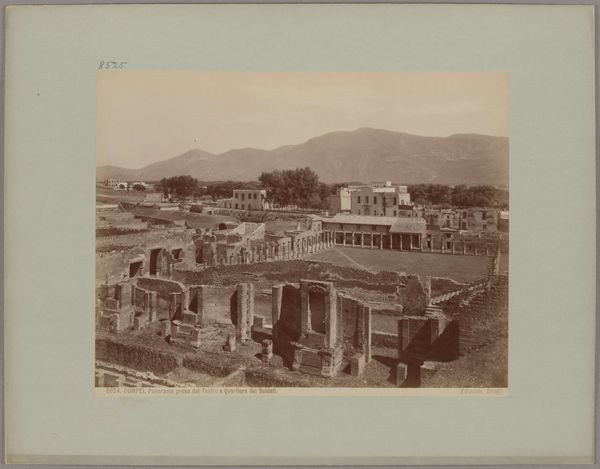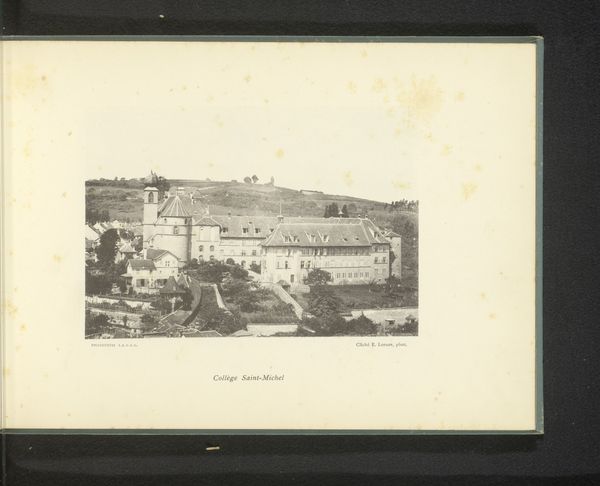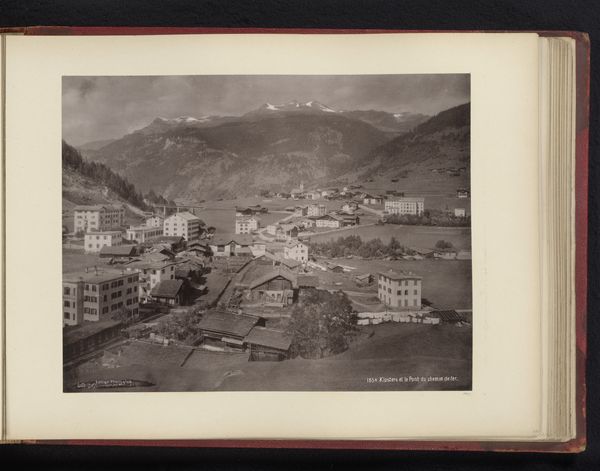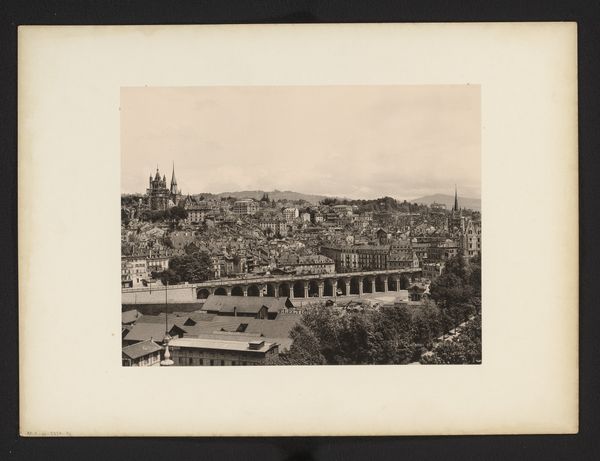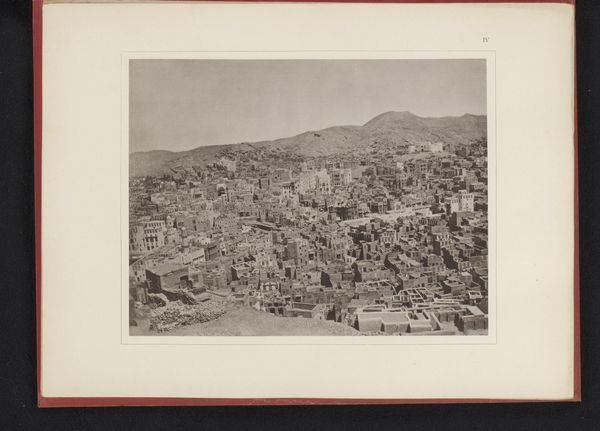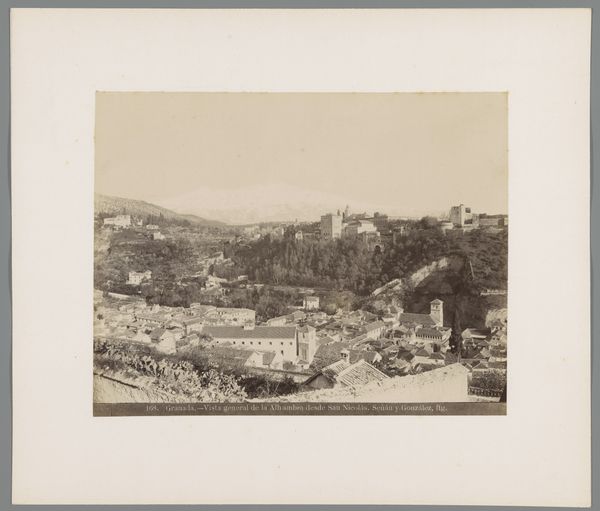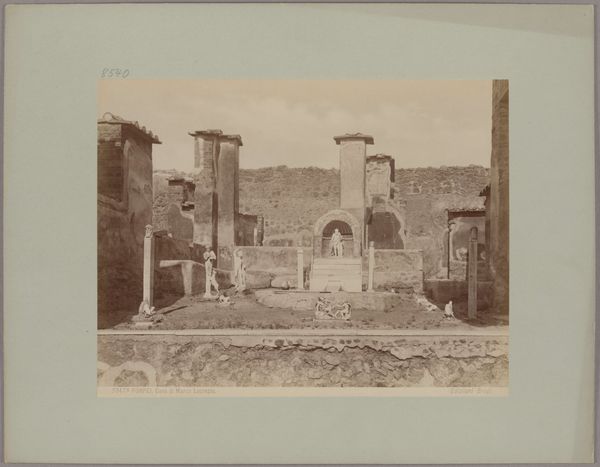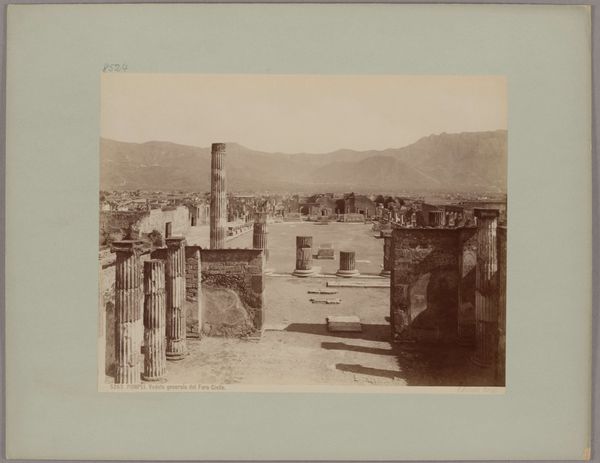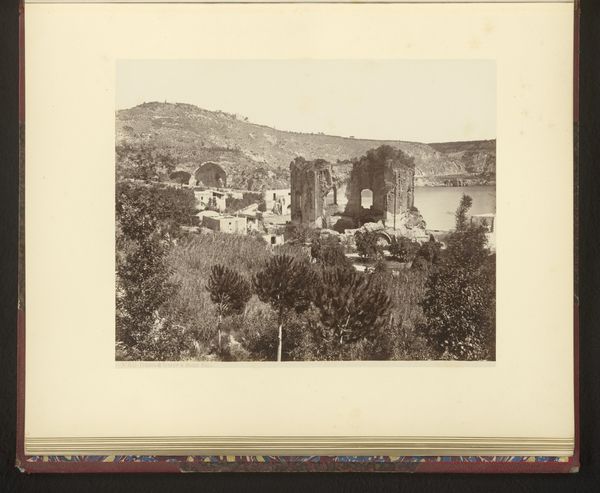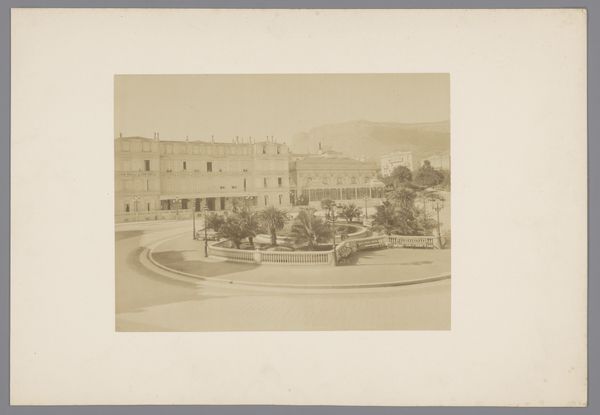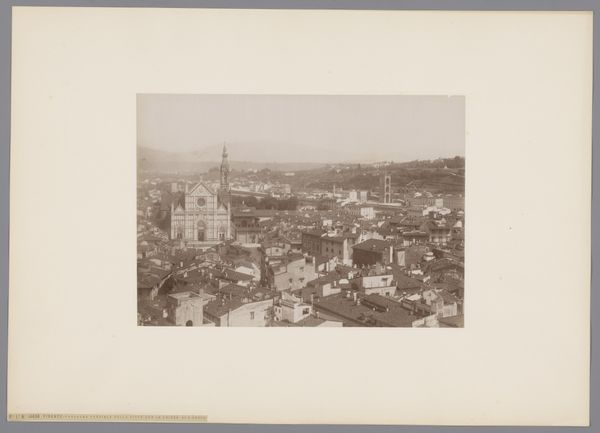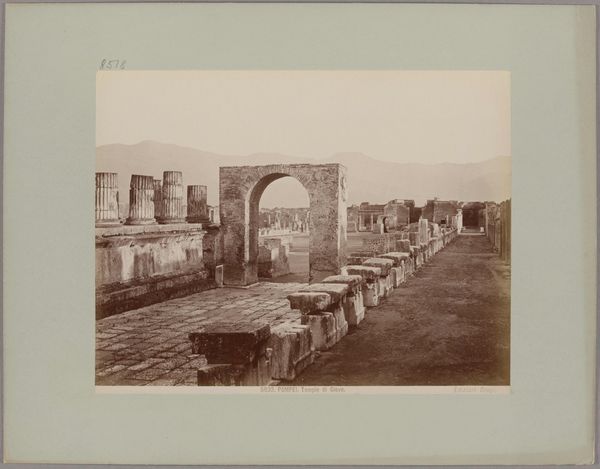
print, photography, gelatin-silver-print
# print
#
landscape
#
photography
#
orientalism
#
gelatin-silver-print
#
islamic-art
Dimensions: height 270 mm, width 360 mm
Copyright: Rijks Museum: Open Domain
Curator: The photograph we are viewing is entitled "Gezicht op de Ka'aba in de Al-Masjid al-Haram in Mekka," which translates to "View of the Ka'aba in the Great Mosque of Mecca." This gelatin silver print, showcasing a landscape perspective, was captured by Abd al-Ghaffar in 1889. Editor: It's strikingly formal and austere. The photograph uses a very high vantage point to capture the Kaaba within its urban setting; everything seems very regimented and still. Curator: Absolutely. Photography in this era often carried the weight of documentation, particularly in the context of Orientalism. It was as much about observing as it was about archiving, and about placing on display an aesthetic, almost an obsession with order, that reinforced colonial expectations and social power. Editor: Indeed. The Ka'aba itself, as a powerful symbol of spiritual unity, appears almost minimized here by the city sprawling around it. What resonates with me is how that iconic form is rendered within an impersonal, encompassing view. One could argue, in this way, that its sanctity gets reinterpreted and recontextualized for those of different cultural and religious beliefs to the point it has almost another function in this presentation, that it becomes simply part of another city panorama. Curator: It underscores how such visual representations could, perhaps inadvertently, flatten complex spiritual realities, turning them into digestible, if sometimes superficial, consumable views for a Western audience, and in doing so further legitimized photography as tool for social control. Editor: The lack of human presence, paradoxically, makes the site feel somewhat empty, despite its profound spiritual importance. Is this because of the photographic limitations of the era or is it intentional? Does it have something to do with power? Curator: Probably a combination of technical constraints and conscious aesthetic choices rooted in prevailing cultural views on Islamic art and orientalism. Abd al-Ghaffar would likely have considered how his work fitted into established artistic styles that dominated his target market. Editor: Well, seeing how that symbolism shifts across eras and cultural landscapes has offered a refreshing perspective on this photograph. Curator: Indeed, seeing beyond that static first impression reveals complex considerations that can shape a work's legacy across history and geographies.
Comments
No comments
Be the first to comment and join the conversation on the ultimate creative platform.
